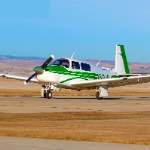Thank you for the help. I only mentioned the “lean machine” because that was the only version besides the AT that I knew to have no autopilot. I believe now that it is an AT, (original post edited to reflect) however a search of the serial number on a few spreadsheets I found online list it as an MSE, and outside the window of AT’s manufactured for 1991. I’ve found conflicting info on the 205’s as well. Perhaps someone here can help me clear it up? It’s got the round windows, landing lights in the wings instead of lower cowl, and enclosed wingtips. A Flying magazine I have lists the round windows as features of the 205, unless this became standard later on on all 201’s and AT’s? (July 2010 issue.)
The things that lead me to believe it’s an AT, is that the engine gauges are large, and located in the center panel, just to the left of the radios, instead of over by the circuit breakers. Dual brakes. No electric trim or autopilot as mentioned before, and manual cowl flaps. came equipped with HSI, CDI and RMI for round dials, and dual altimeters. I’m not sure if this layout has anything to do with the AT, or if it’s just how it was spec’d when it left the factory. The instrument panel is the same cream color as the MSE’’s, however the yokes just have the mooney logo and not the “special edition” badging, for what it’s worth. Interestingly, the original POH is not for the advanced trainer version, (those have AT printed in the top centre of the page) as well I believe the certified gross weight of the AT’s was 2740, vs the 2900 that I’ve got. Hopefully someone somewhere can shed some light on some of this one day because it’s clear as mud to me.
